It looks like you're using an Ad Blocker.
Please white-list or disable AboveTopSecret.com in your ad-blocking tool.
Thank you.
Some features of ATS will be disabled while you continue to use an ad-blocker.
share:
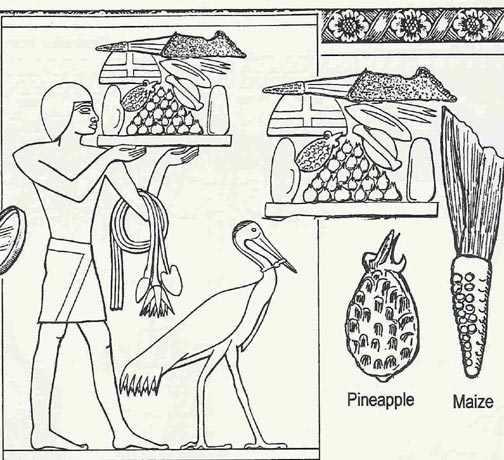
A mural from Queen Hatshepsut's Temple at Dier el-Bahri on the Nile River includes a maize cob and a pineapple--both New World plants. This mural dates to about 1475 BC. Subsequently, scientists identified remains of two more New World plants (tobacco and coc aine) in the mummy of Ramses II. Alphonse de Condole, a French botanist, noted that Egyptian field workers had found corn or maize kernels in an ancient sarcophagus. He said that this was "an attempt by Muslims to confuse Western historians."
archive.coasttocoastam.com...
The above popped-up on me while surfing, I had never seen this before although I knew of a similar claim being made by some of a Maize looking plant in Rosslyn Chapel, the link is making a connection between old world and new world.
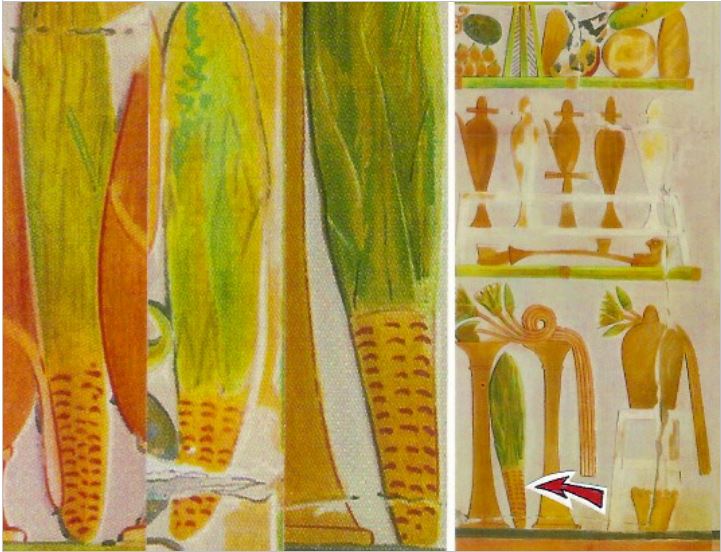
Maize or Indian corn at Temple of Pharaoh Hatshepsut, Deir al-Bahri, 1470 BC
Howard Carter’s illustration of Grain from Punt, Egypt Exploration Soc., c. 1900

ancientamerica.com...
Same person Dr. Gunnar Thompson different site same info as on the Coast To Coast link,
I can't find the original untouched Deir Al-Bahri mural for a good comparison, but why would Puntites export American maize to Kmt that doesn't make much sense,but maybe I am missing something.
edit on 22-3-2015 by Spider879 because: (no reason given)
a reply to: Mr Headshot
If its a pomegranate then surely it would have been round because that fruit is always round and never oblong shaped.
I suspect that in the past with the water levels so much lower there were many more islands in the Atlantic Ocean which meant that the Egyptian ships could navigate to the Americas. I don't understand why this is such a weird hypothesis. Our ancient relations travelled considerably for trade and curiosity.
If its a pomegranate then surely it would have been round because that fruit is always round and never oblong shaped.
I suspect that in the past with the water levels so much lower there were many more islands in the Atlantic Ocean which meant that the Egyptian ships could navigate to the Americas. I don't understand why this is such a weird hypothesis. Our ancient relations travelled considerably for trade and curiosity.
a reply to: Spider879
Is this it?
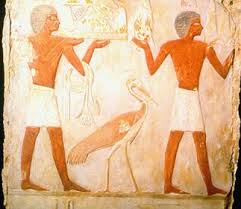
Chinese-Unicorn
The very best of exotic things for a special King - would that include corn? It's really hard to see on the image above.
Here's the ones in Rosslyn though, for comparison:

Is this it?

The loading of the ships very heavily with marvels of the country of Punt; all goodly fragrant woods of The Divine Land, heaps of myrrh-resin, with fresh myrrh trees, with ebony and pure ivory, with green gold of Emu, with cinnamon wood, khesyt wood, with ihmut-incense, sonter-incense, eye-cosmetic, with apes, monkeys, dogs, and with skins of the southern panther, with natives and their children. Never was brought the like of this for any king who has been since the beginning.
Chinese-Unicorn
The very best of exotic things for a special King - would that include corn? It's really hard to see on the image above.
Here's the ones in Rosslyn though, for comparison:

originally posted by: Mr Headshot
Pineapple is obviously a pomegranate
Hmmm not so sure unless it was halved,but you could be right the leaves of the " pineapple" are different unless they were hacked off.

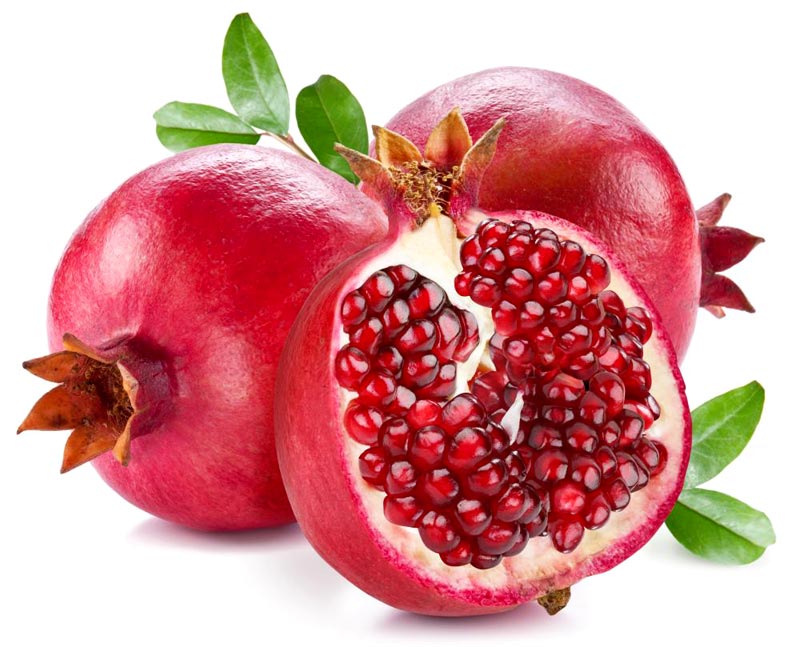
originally posted by: beansidhe
a reply to: Spider879
Is this it?
The loading of the ships very heavily with marvels of the country of Punt; all goodly fragrant woods of The Divine Land, heaps of myrrh-resin, with fresh myrrh trees, with ebony and pure ivory, with green gold of Emu, with cinnamon wood, khesyt wood, with ihmut-incense, sonter-incense, eye-cosmetic, with apes, monkeys, dogs, and with skins of the southern panther, with natives and their children. Never was brought the like of this for any king who has been since the beginning.
Yes that looks to be it although I can't make out too much detail.
Chinese-Unicorn
The very best of exotic things for a special King - would that include corn? It's really hard to see on the image above.
Here's the ones in Rosslyn though, for comparison:
originally posted by: Mr Headshot
Pineapple is obviously a pomegranate
No, a pomegranate has a round, ball like shape and a smooth skin, no lumps or bumps on it.
Can't be a Pomegranate.
It's size and shape (minus the raised markings on the skin though) especially the stalk part, of an aubergine or egg-plant.
Or it could be a lotus root perhaps.
edit on 22-3-2015 by MysterX because: added text
The 'pineapple' looks like a pomegranate, and the 'maize' looks like fronds sticking out of a wicker or reed basket/sconce to me...
Combine that with the fact that the "source" (CoastToCoast) also cites the incorrect claims about coc aine and tobacco as if they were true, and I have a real hard time believing this...
Combine that with the fact that the "source" (CoastToCoast) also cites the incorrect claims about coc aine and tobacco as if they were true, and I have a real hard time believing this...
edit on 3/22/2015 by AdmireTheDistance because: why the heck does ats put a space in
coc aine?
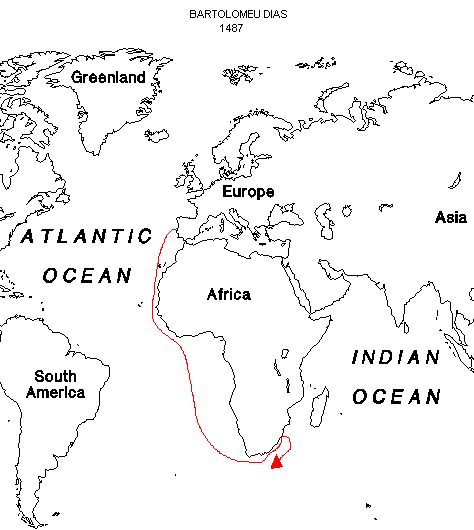
"IF" as suggested by the link that Hatsheput's fleet which was led by a man under the ethnic name Nahasi rounded the cape before or after visiting Pwnt and head to the Americas to buy corn, then that in itself have certain problems..why not brag about it at all, the way she did of her merchant fleet's visit to Pwnt, and while the Kemetians were not bad sailors rounding the cape was not an easy thing, yes Hanno did but he was charged to do so, later sailors such as the Swahili,Arabs,Persians and during the European age of exploration dreaded the cape, yet presumably Nahasi did so twice instead of going back through the Med and sailed up river to Dier el-Bahri.
edit on 22-3-2015 by Spider879 because: (no reason given)
a reply to: AdmireTheDistance
That actually is true though.
Mass spec testing of ancient Egyptian mummies discovered traces of both Cocaine and Tobacco, but also liberal traces of Cannabis residues too.
The AE rulers knew which side their bread was buttered as far as mind altering substances went. They were also quite fond of the Blue Lotus, which is quite the hallucinogen i gather.
That actually is true though.
Mass spec testing of ancient Egyptian mummies discovered traces of both Cocaine and Tobacco, but also liberal traces of Cannabis residues too.
The AE rulers knew which side their bread was buttered as far as mind altering substances went. They were also quite fond of the Blue Lotus, which is quite the hallucinogen i gather.
originally posted by: MysterX
a reply to: AdmireTheDistance
That actually is true though.
Mass spec testing of ancient Egyptian mummies discovered traces of both Cocaine and Tobacco, but also liberal traces of Cannabis residues too.
The AE rulers knew which side their bread was buttered as far as mind altering substances went. They were also quite fond of the Blue Lotus, which is quite the hallucinogen i gather.
A post from ATS about the above
Cocaine and Tobacco in anceint Egypt?
www.abovetopsecret.com...
Although some have it in dispute below is Dr Balabanova critics and response to her criticizers
www.faculty.ucr.edu...
edit on 22-3-2015 by Spider879 because: (no reason given)
a reply to: Spider879
Perhaps science isn't thinking laterally enough...
Who's to say that both Cocaine and Nicotine were not originally native to Africa before being introduced (naturally or otherwise) to South America?
It's always assumed that these plants were native to the Americas only and brought back by the AE's fom there, but what if they were originally native to the Africas, went extinct there with little to no examples remaining anywhere in Africa, but thrived in the Americas?
Perhaps science isn't thinking laterally enough...
Who's to say that both Cocaine and Nicotine were not originally native to Africa before being introduced (naturally or otherwise) to South America?
It's always assumed that these plants were native to the Americas only and brought back by the AE's fom there, but what if they were originally native to the Africas, went extinct there with little to no examples remaining anywhere in Africa, but thrived in the Americas?


I donno this seemed a good eye ball match if we were looking at a mural in meso-America most would think maize.
originally posted by: MysterX
a reply to: Spider879
Perhaps science isn't thinking laterally enough...
Who's to say that both Cocaine and Nicotine were not originally native to Africa before being introduced (naturally or otherwise) to South America?
It's always assumed that these plants were native to the Americas only and brought back by the AE's fom there, but what if they were originally native to the Africas, went extinct there with little to no examples remaining anywhere in Africa, but thrived in the Americas?
I think that scenario was bought up as a possibility for some extinct form of tobacco but not for coc aine.
edit on 22-3-2015 by Spider879
because: (no reason given)
a reply to: Spider879
Hey Spider, you may have already seen this, but there are plants outside of South America that *could* account for the presence of traces of marching powder:
Source
ETA: to me, it looks like a split open Pomegranite, and Maize btw
Hey Spider, you may have already seen this, but there are plants outside of South America that *could* account for the presence of traces of marching powder:
However, there is no reason to suppose that the coc aine identified by Balabanova in Egyptian mummies originated in South America because there are coc aine producing Erythroxylum species, which are indigenous to regions of Africa, India and Asia.
It is certainly feasible that plants containing coc aine were present in Ancient Egypt as there are examples of flora known to have grown there which subsequently became extinct, although some have been reintroduced. These include: both the blue and white water lilies, the "Ished" Tree (modern persea); a sacred tree on whose leaves the name of Pharaoh was inscribed to guarantee him a long life, the carob (Ceratonia siliqua), the Christ's Thorn (Ziziphus spina) and the Stone Pine (Pinus pinea). If the heraldic flower of the South was a real plant (and some believe that it was invented), the most likely candidate is the so-called Madonna lily (Lilium candidum).
Cocaine containing plants, such as E. monogynum, which is present in India, could have been acquired by the ancient Egyptians or in neighbouring areas which the Egyptians traded with.
Cocaine is produced in quantity exclusively by Erythroxylum species native to South America [8 & 35 - 37]. However the genus Erythroxylon contains over 200 species distributed throughout the tropics including the Americas, Asia, South Africa, Madagascar and Australia. Some of these species produce coc aine although in much smaller amounts than in the South American species. [38 - 42] E. brownianum for instance is a species native to South Africa which produces 400ppm (parts per million – equivalent to 0.4mg/g) coc aine in its leaves. [40] E. monogynum, red cedar, is native to India and contains up to 400ppm coc aine in its roots. [40] The shoots and leaves from this plant are also edible. It is possible that the Ancient Egyptians could have had access to these species of plant or even that there were related species present in Egypt that produced coc aine in sufficient quantity to account for the amounts identified.
Source
ETA: to me, it looks like a split open Pomegranite, and Maize btw
edit on 22-3-2015 by skalla because: (no reason given)
originally posted by: skalla
a reply to: Spider879
Hey Spider, you may have already seen this, but there are plants outside of South America that *could* account for the presence of traces of marching powder:
However, there is no reason to suppose that the coc aine identified by Balabanova in Egyptian mummies originated in South America because there are coc aine producing Erythroxylum species, which are indigenous to regions of Africa, India and Asia.
It is certainly feasible that plants containing coc aine were present in Ancient Egypt as there are examples of flora known to have grown there which subsequently became extinct, although some have been reintroduced. These include: both the blue and white water lilies, the "Ished" Tree (modern persea); a sacred tree on whose leaves the name of Pharaoh was inscribed to guarantee him a long life, the carob (Ceratonia siliqua), the Christ's Thorn (Ziziphus spina) and the Stone Pine (Pinus pinea). If the heraldic flower of the South was a real plant (and some believe that it was invented), the most likely candidate is the so-called Madonna lily (Lilium candidum).
Cocaine containing plants, such as E. monogynum, which is present in India, could have been acquired by the ancient Egyptians or in neighbouring areas which the Egyptians traded with.
Cocaine is produced in quantity exclusively by Erythroxylum species native to South America [8 & 35 - 37]. However the genus Erythroxylon contains over 200 species distributed throughout the tropics including the Americas, Asia, South Africa, Madagascar and Australia. Some of these species produce coc aine although in much smaller amounts than in the South American species. [38 - 42] E. brownianum for instance is a species native to South Africa which produces 400ppm (parts per million – equivalent to 0.4mg/g) coc aine in its leaves. [40] E. monogynum, red cedar, is native to India and contains up to 400ppm coc aine in its roots. [40] The shoots and leaves from this plant are also edible. It is possible that the Ancient Egyptians could have had access to these species of plant or even that there were related species present in Egypt that produced coc aine in sufficient quantity to account for the amounts identified.
Source
ETA: to me, it looks like a split open Pomegranite, and Maize btw
Much thanks as always Skalla..Madagascar seemed like a likely source for it then.
There is zero evidence new-world maize was ever present in ancient Egypt. The depictions above alone do not resemble maize, as the leaves should cover
the cob as well.
The above illustrations appear to be a slim basket holding leaves, that can be slung for carrying. To my eyes these are woven baskets for carrying leaves or grains. We've seen the depictions of workers/farmers with this type of basket slung across their back, "sacks" and "bags" for carrying grains.

Compare how real corn looks. Leaves do not sprout from the end of the ear.

If new-world maize HAD been introduced to Egypt, there would be indisputable evidence of crop fields. There would be fire pits full of charred cobs, as cobs make an excellent fuel source. Ancient Egyptians would have been burning cobs instead of wood in their fire pits for making gypsum mortar, and that evidence would have been preserved. Tels would contain the detritus of ancient maize. Amphora used to transport food stuffs for trade would have been found full of maize, just as those have been found containing all manner of trade goods used by ancient Egypt. Canopic jars would have been found stuffed full of maize, such as those found filled with the known grains of ancient Egypt, an important requirement as the deceased needed to take all the items they would need for the afterlife including food.
Instead, all we have is one depiction that with all due respect, only vaguely resembles maize.
The above illustrations appear to be a slim basket holding leaves, that can be slung for carrying. To my eyes these are woven baskets for carrying leaves or grains. We've seen the depictions of workers/farmers with this type of basket slung across their back, "sacks" and "bags" for carrying grains.

Compare how real corn looks. Leaves do not sprout from the end of the ear.

If new-world maize HAD been introduced to Egypt, there would be indisputable evidence of crop fields. There would be fire pits full of charred cobs, as cobs make an excellent fuel source. Ancient Egyptians would have been burning cobs instead of wood in their fire pits for making gypsum mortar, and that evidence would have been preserved. Tels would contain the detritus of ancient maize. Amphora used to transport food stuffs for trade would have been found full of maize, just as those have been found containing all manner of trade goods used by ancient Egypt. Canopic jars would have been found stuffed full of maize, such as those found filled with the known grains of ancient Egypt, an important requirement as the deceased needed to take all the items they would need for the afterlife including food.
Instead, all we have is one depiction that with all due respect, only vaguely resembles maize.
a reply to: Blackmarketeer
Most ancient Egyptian artwork was intended to carry and convey more information, more meaning than a typical piece of still life artwork for decorative purposes would do today.
Many AE's were illiterate, in fact the majority of them were...obviously, like anyone else, they could 'read' pictures though.
The artwork we see adorning tombs and temples, were illustrated during a tradition of majority illiteracy, so of course, were intended as both decorative and refined, but also to convey a story or a telling of notable events or deeds done by the occupant of the tomb.
Even the elites who occupied these tombs and temples, probably did not foresee a time when the situation with mass illiteracy among the people would ever change, and would have assumed most would never be able to read and understand the written word. Considering these self opinionated elite wanted the tales of their daring do to be understood by everyone for all time, so their artwork to convey the message was designed to be a book in a picture...lots of information is squeezed into each mural.
Like depicting an ear of maize / corn..would it simply be represented as a tapering, roughly thin oval in shape, with a green covering of leaves...that wouldn't convey as much information as possible, as it only told half the story..what is needed to properly recognise what the vegetable was, would be to show what the outside of this object looked like, the dagger / spear shaped leaves tightly against the body of the cob, AND what the inside looked like once you had taken away the leaves.
That is what these images seem to be saying on this mural...this is what this vegetable looks like right off the plant, and this is what it looks like inside. Remember, it has to be clear to the bulk of an illiterate population exactly what they are being 'told'.
If only the husk leaves were shown, it could potentially be mistaken for some other completely different plant or fruit...i could see how a corn cob could possibly be mistaken for something like an strangely elongated artichoke or some other leave wrapped plant or vegetable...showing the rows of corn inside however, cinches that what this is is an ear of corn / maize.
Most ancient Egyptian artwork was intended to carry and convey more information, more meaning than a typical piece of still life artwork for decorative purposes would do today.
Many AE's were illiterate, in fact the majority of them were...obviously, like anyone else, they could 'read' pictures though.
The artwork we see adorning tombs and temples, were illustrated during a tradition of majority illiteracy, so of course, were intended as both decorative and refined, but also to convey a story or a telling of notable events or deeds done by the occupant of the tomb.
Even the elites who occupied these tombs and temples, probably did not foresee a time when the situation with mass illiteracy among the people would ever change, and would have assumed most would never be able to read and understand the written word. Considering these self opinionated elite wanted the tales of their daring do to be understood by everyone for all time, so their artwork to convey the message was designed to be a book in a picture...lots of information is squeezed into each mural.
Like depicting an ear of maize / corn..would it simply be represented as a tapering, roughly thin oval in shape, with a green covering of leaves...that wouldn't convey as much information as possible, as it only told half the story..what is needed to properly recognise what the vegetable was, would be to show what the outside of this object looked like, the dagger / spear shaped leaves tightly against the body of the cob, AND what the inside looked like once you had taken away the leaves.
That is what these images seem to be saying on this mural...this is what this vegetable looks like right off the plant, and this is what it looks like inside. Remember, it has to be clear to the bulk of an illiterate population exactly what they are being 'told'.
If only the husk leaves were shown, it could potentially be mistaken for some other completely different plant or fruit...i could see how a corn cob could possibly be mistaken for something like an strangely elongated artichoke or some other leave wrapped plant or vegetable...showing the rows of corn inside however, cinches that what this is is an ear of corn / maize.
a reply to: Blackmarketeer
I agree.
If maize had made it to AE through trade with the New World, it would have been grown as a crop.
I think the depiction claimed to be maize is a root vegetable of some sort.
I agree.
If maize had made it to AE through trade with the New World, it would have been grown as a crop.
I think the depiction claimed to be maize is a root vegetable of some sort.
new topics
-
Weinstein's conviction overturned
Mainstream News: 50 minutes ago -
Supreme Court Oral Arguments 4.25.2024 - Are PRESIDENTS IMMUNE From Later Being Prosecuted.
Above Politics: 2 hours ago -
Krystalnacht on today's most elite Universities?
Social Issues and Civil Unrest: 2 hours ago -
Chris Christie Wishes Death Upon Trump and Ramaswamy
Politicians & People: 2 hours ago -
University of Texas Instantly Shuts Down Anti Israel Protests
Education and Media: 5 hours ago -
Any one suspicious of fever promotions events, major investor Goldman Sachs card only.
The Gray Area: 7 hours ago -
God's Righteousness is Greater than Our Wrath
Religion, Faith, And Theology: 11 hours ago
top topics
-
VP's Secret Service agent brawls with other agents at Andrews
Mainstream News: 16 hours ago, 11 flags -
Nearly 70% Of Americans Want Talks To End War In Ukraine
Political Issues: 17 hours ago, 6 flags -
Krystalnacht on today's most elite Universities?
Social Issues and Civil Unrest: 2 hours ago, 6 flags -
Sunak spinning the sickness figures
Other Current Events: 16 hours ago, 5 flags -
Supreme Court Oral Arguments 4.25.2024 - Are PRESIDENTS IMMUNE From Later Being Prosecuted.
Above Politics: 2 hours ago, 5 flags -
Weinstein's conviction overturned
Mainstream News: 50 minutes ago, 4 flags -
Electrical tricks for saving money
Education and Media: 14 hours ago, 4 flags -
University of Texas Instantly Shuts Down Anti Israel Protests
Education and Media: 5 hours ago, 2 flags -
Any one suspicious of fever promotions events, major investor Goldman Sachs card only.
The Gray Area: 7 hours ago, 2 flags -
Chris Christie Wishes Death Upon Trump and Ramaswamy
Politicians & People: 2 hours ago, 1 flags
active topics
-
VP's Secret Service agent brawls with other agents at Andrews
Mainstream News • 45 • : network dude -
Supreme Court Oral Arguments 4.25.2024 - Are PRESIDENTS IMMUNE From Later Being Prosecuted.
Above Politics • 25 • : WeMustCare -
University of Texas Instantly Shuts Down Anti Israel Protests
Education and Media • 102 • : Threadbarer -
Weinstein's conviction overturned
Mainstream News • 10 • : xuenchen -
Chris Christie Wishes Death Upon Trump and Ramaswamy
Politicians & People • 8 • : network dude -
Nearly 70% Of Americans Want Talks To End War In Ukraine
Political Issues • 79 • : Consvoli -
Remember These Attacks When President Trump 2.0 Retribution-Justice Commences.
2024 Elections • 57 • : TzarChasm -
-@TH3WH17ERABB17- -Q- ---TIME TO SHOW THE WORLD--- -Part- --44--
Dissecting Disinformation • 670 • : cherokeetroy -
British TV Presenter Refuses To Use Guest's Preferred Pronouns
Education and Media • 159 • : 5thHead -
HORRIBLE !! Russian Soldier Drinking Own Urine To Survive In Battle
World War Three • 40 • : Myhandle
